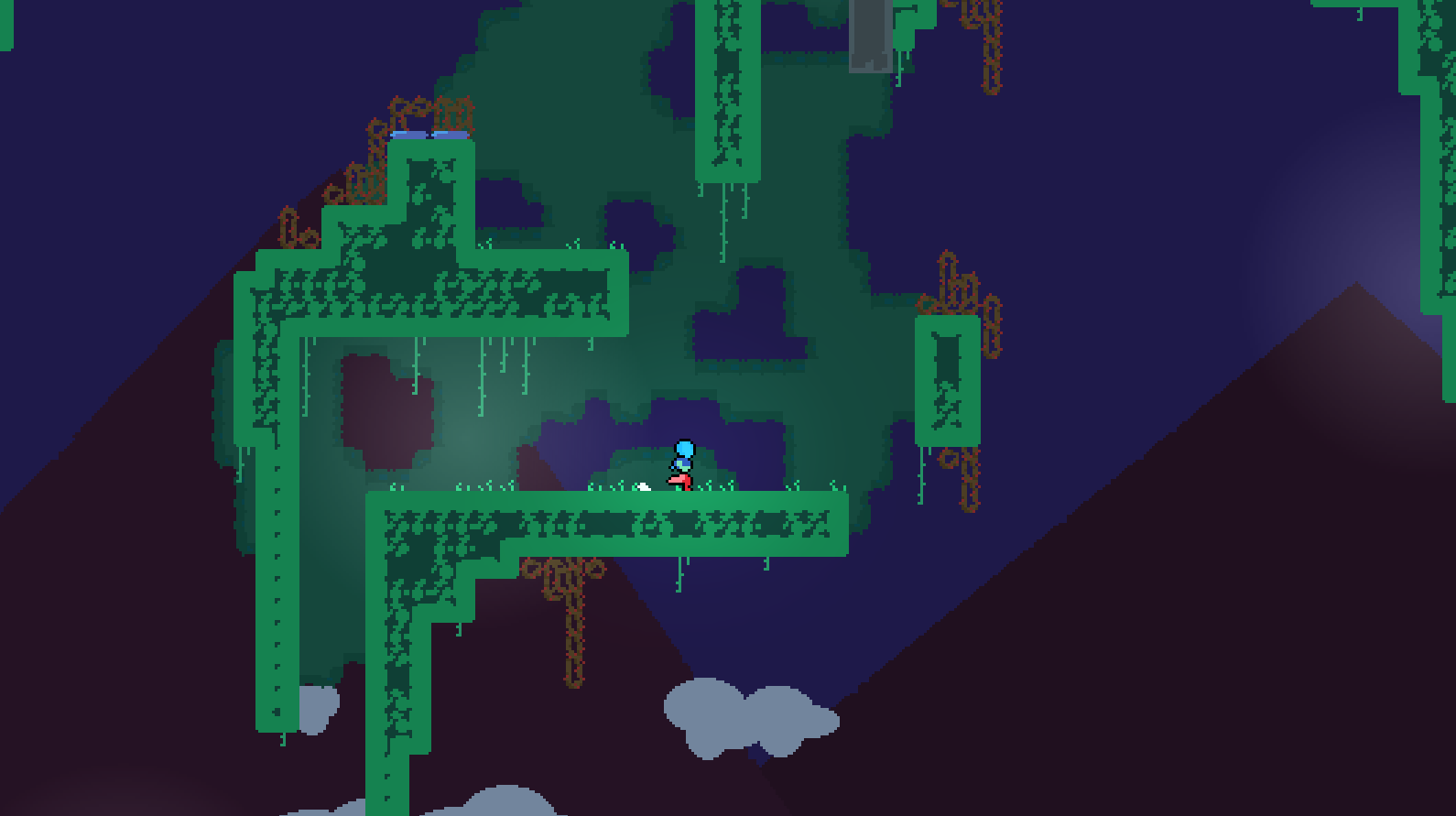
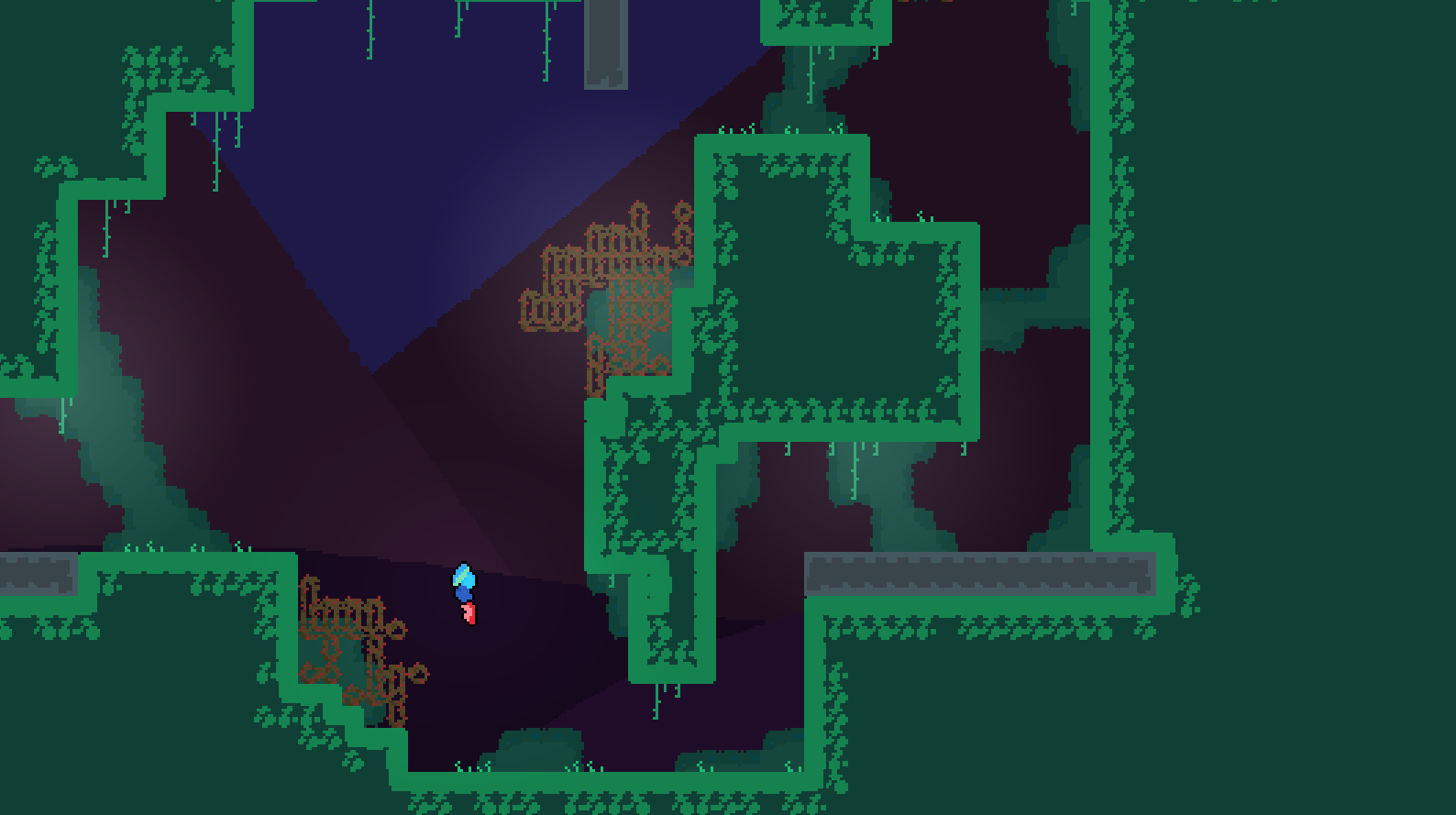
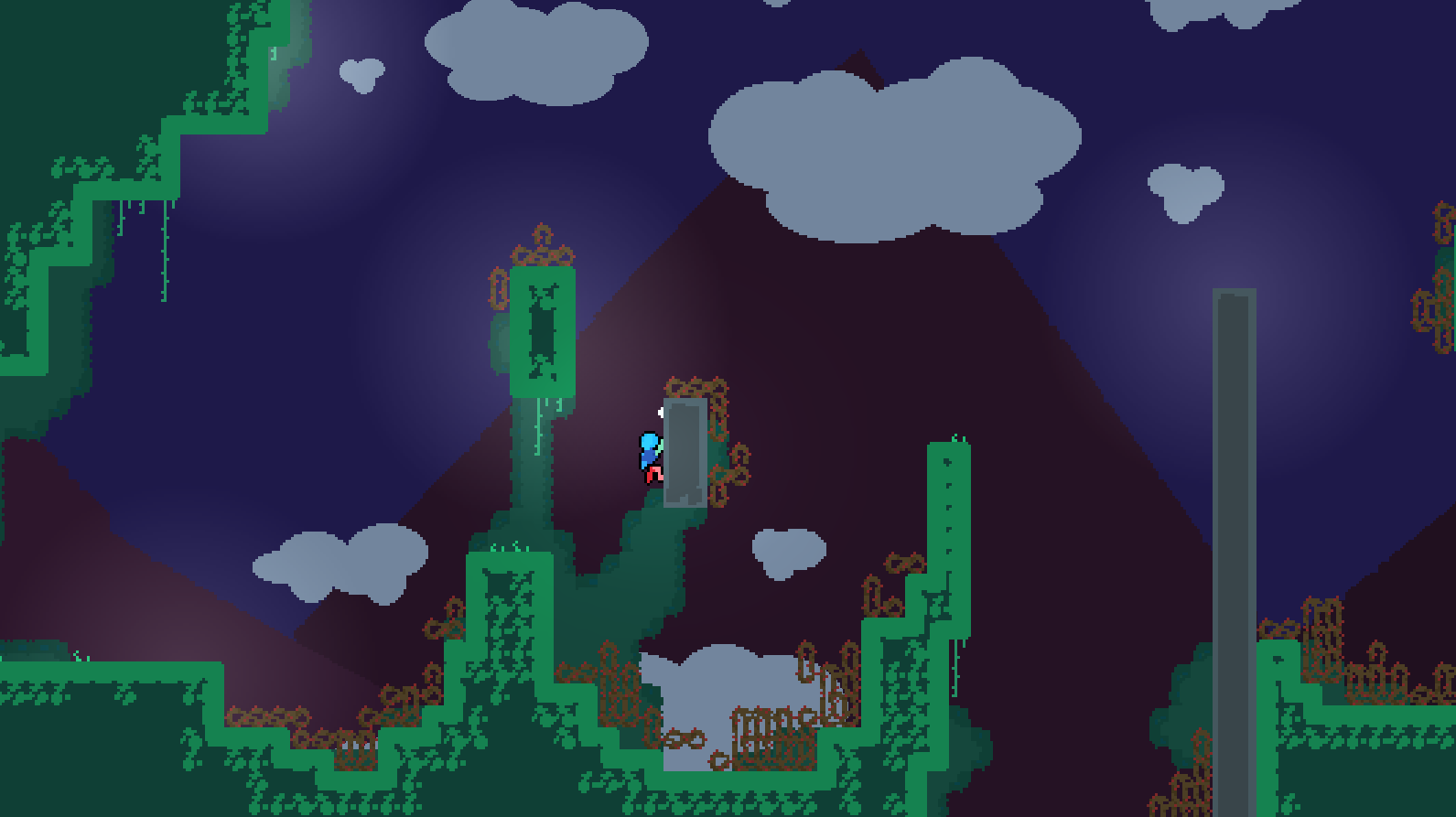
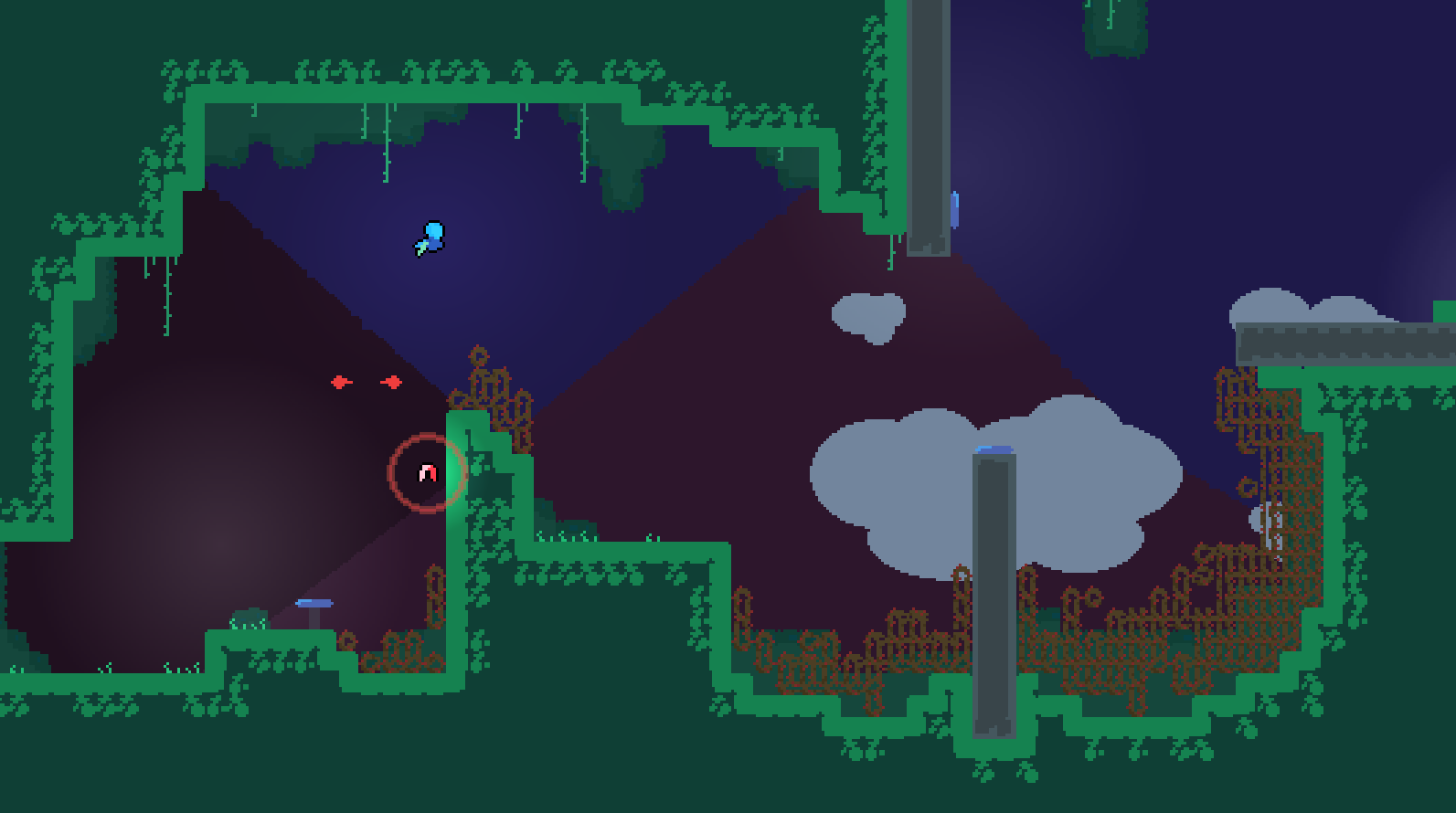
Robot Game (Working Title) is a 2D platformer made in Godot that I have been working on on-and-off for around half a year. The game has many interesting level design and game design considerations.
Core Considerations
- Design a level that teaches the player the difficult mechanics, and intrigues them without the use of collectibles.
- Use consistent visual language in order to develop a way for players to identify secrets within the level.
- Use as little text as possible.
- Playtest early and often.
Finding the Fun in the Playground
Robot Game started as a dinky prototype with rough geometry in place of all pixel art or animations. After leaving the early prototyping phase and adding simple art and animations, I needed to start figuring out how the levels were going to enable the most amount of fun with the mechanics. I made many different test scenarios and narrowed in on what acrobatics felt the most satisfying to do.
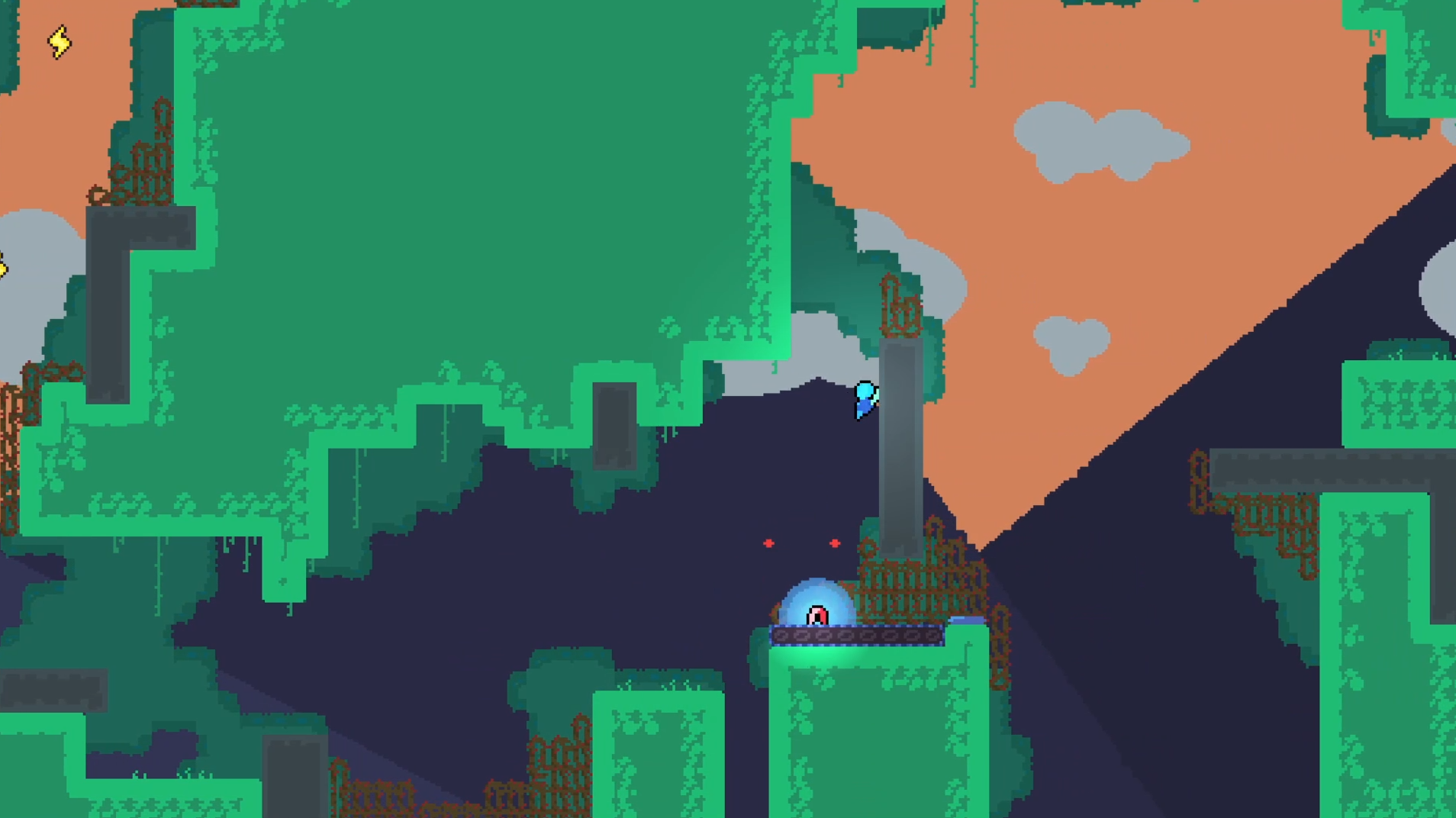
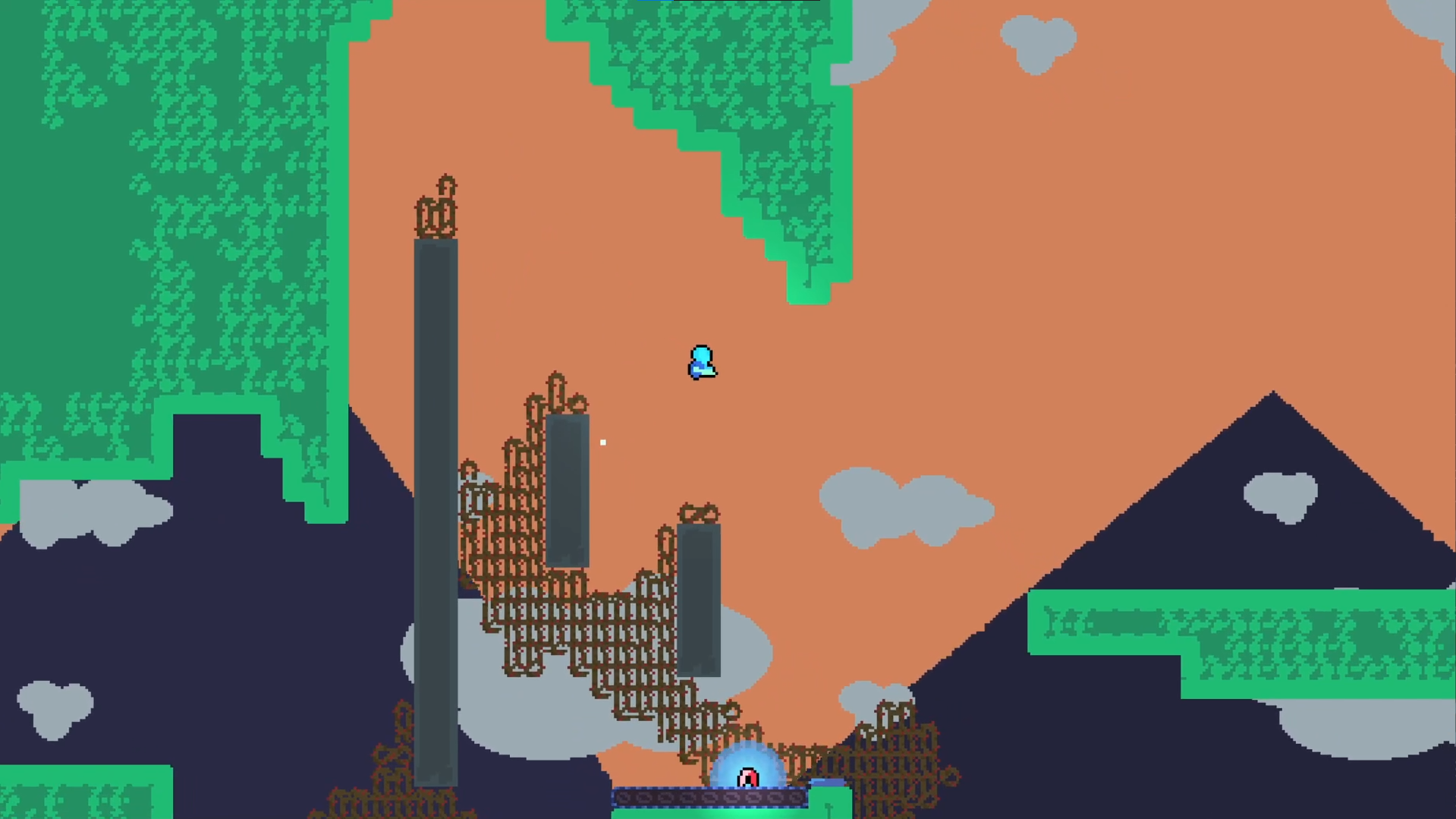
The sequences seen in the images above were short bursts of fun and engaging platforming in a larger, aimless playground level made for testing. This level worked as a good testing ground but didn't offer interesting gameplay for people who were not already familiar with how to control the robot.
Planning and First Pass
Now that I had an idea of what I want the player to eventually be doing, I had to figure out how to get them to that level of proficiency in an engaging and effective tutorial level. When I first sat down to create this tutorial, I had a few design goals in mind:
- Use as little text as possible
- Create a level that is hard but not so hard that it discourages new players
- Introduce branching paths
- Intrigue the player with story rather than collectibles
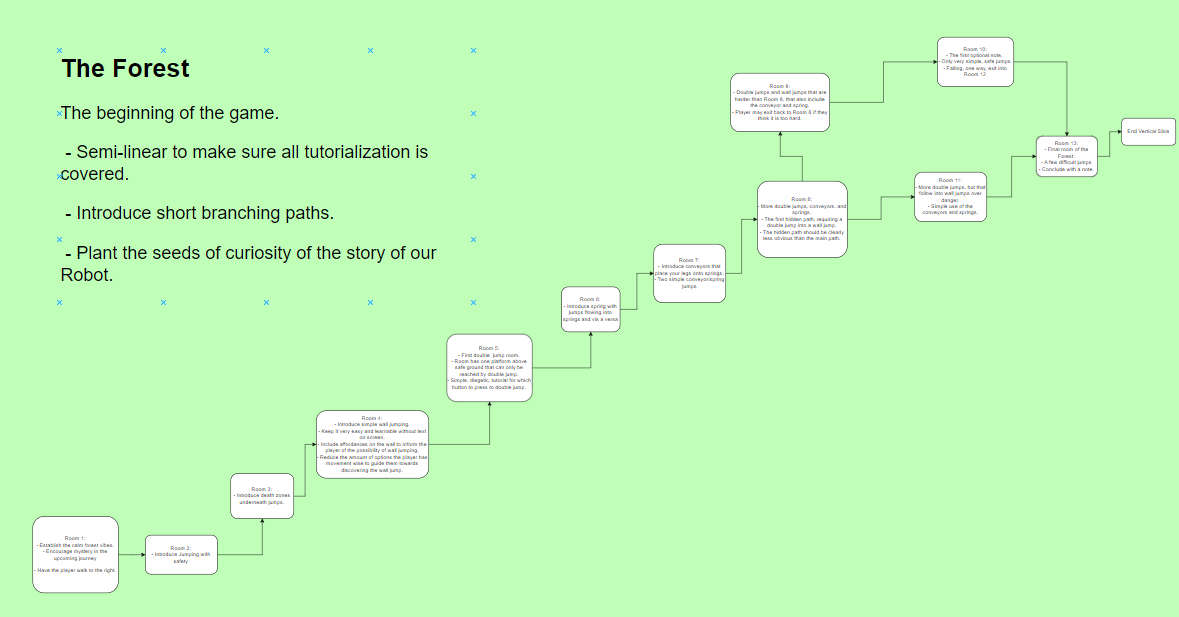
With a flowchart detailing how to structure my first level, I started to put it into engine. I made a few changes on my first pass, such as adding a few more screens to smooth out some of the mechanic progression and adding a second, larger secret area.
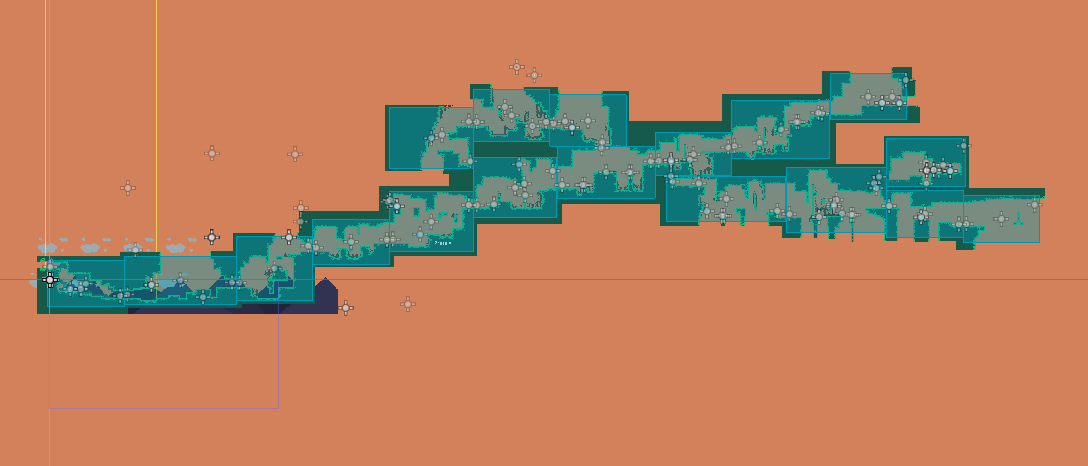
The level will always introduce new mechanics in an isolated scenario so that the player can learn how to use it before being tested in a more difficult contexts synthesizing multiple mechanics or executions.
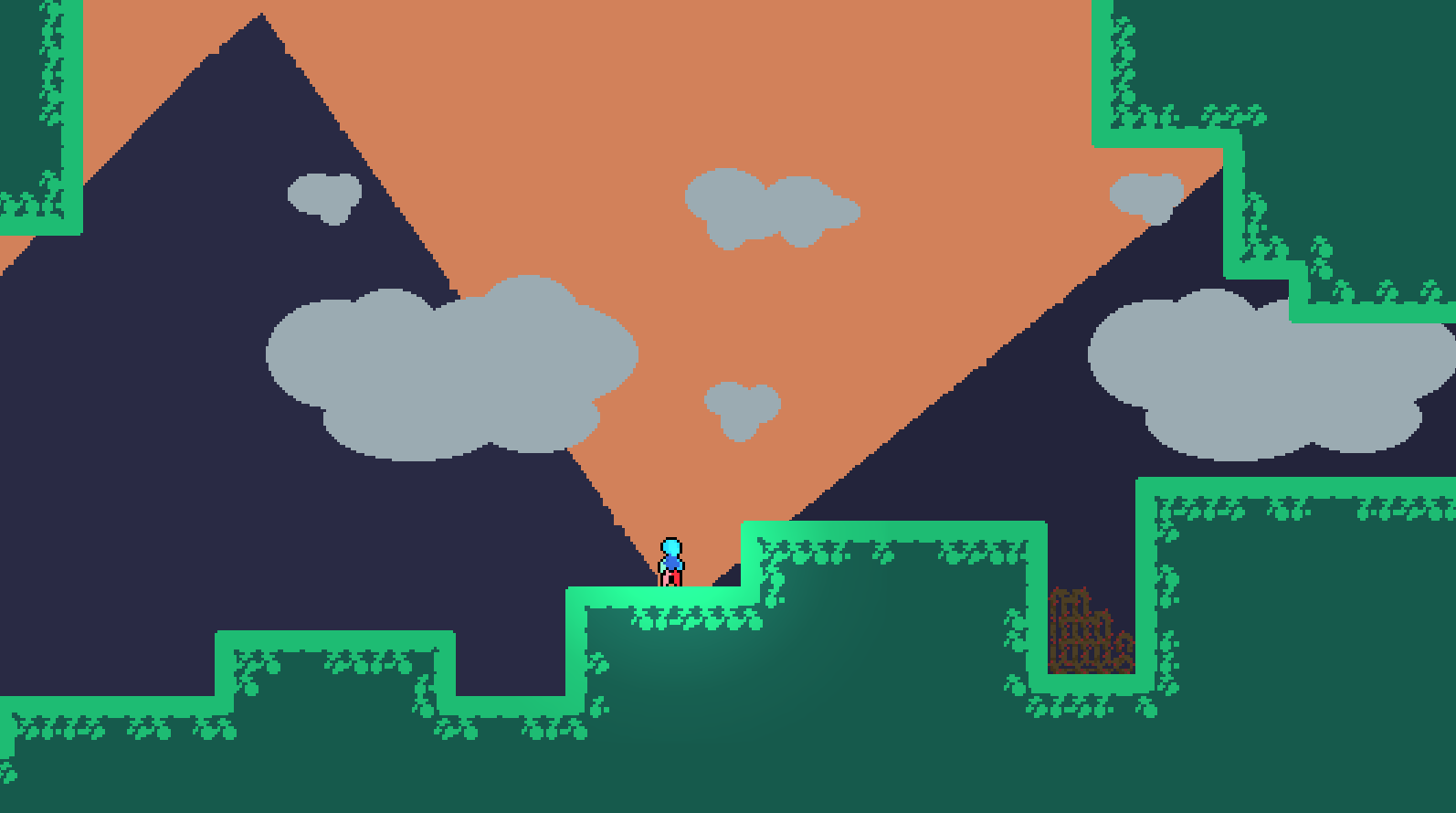
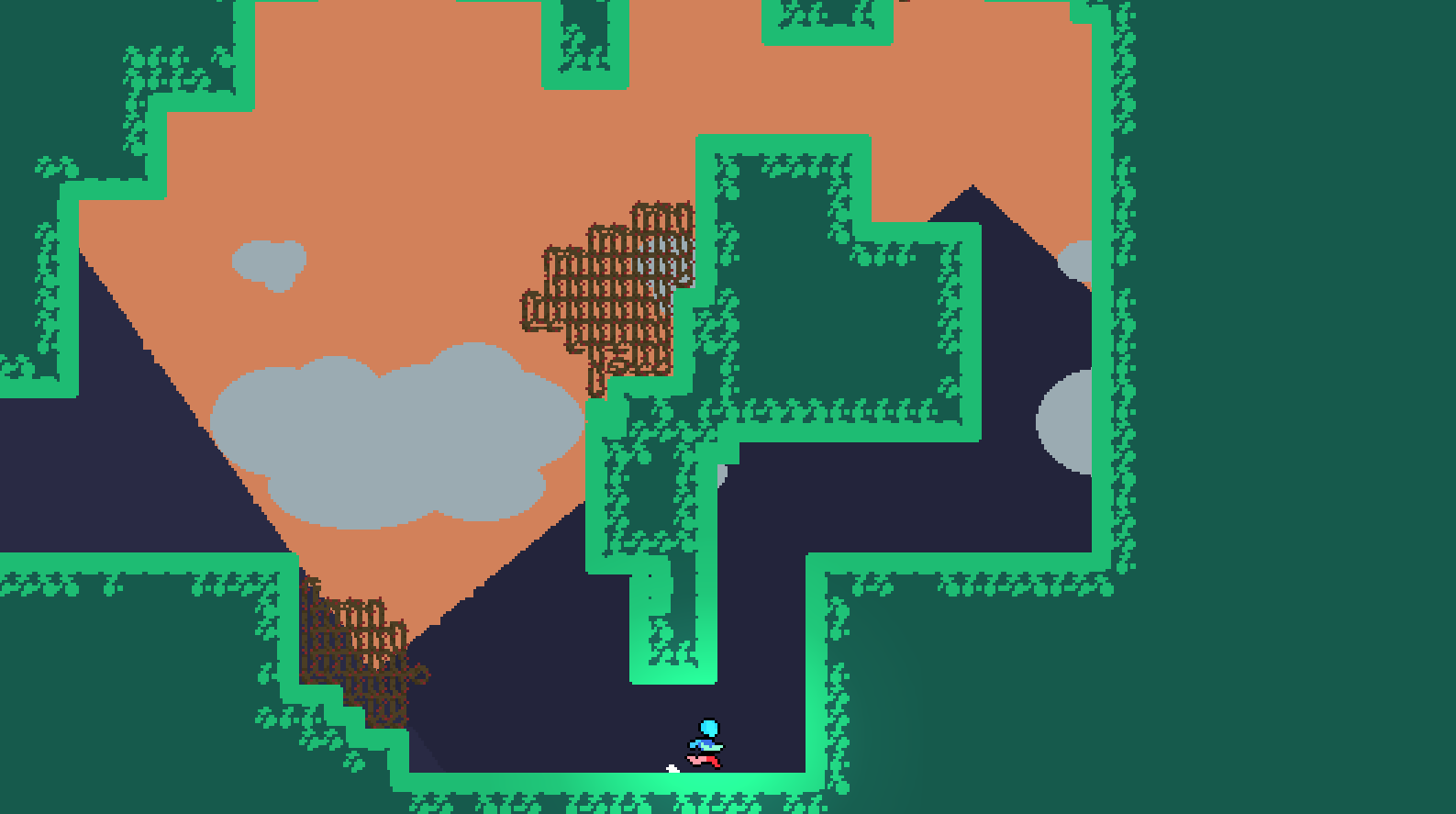
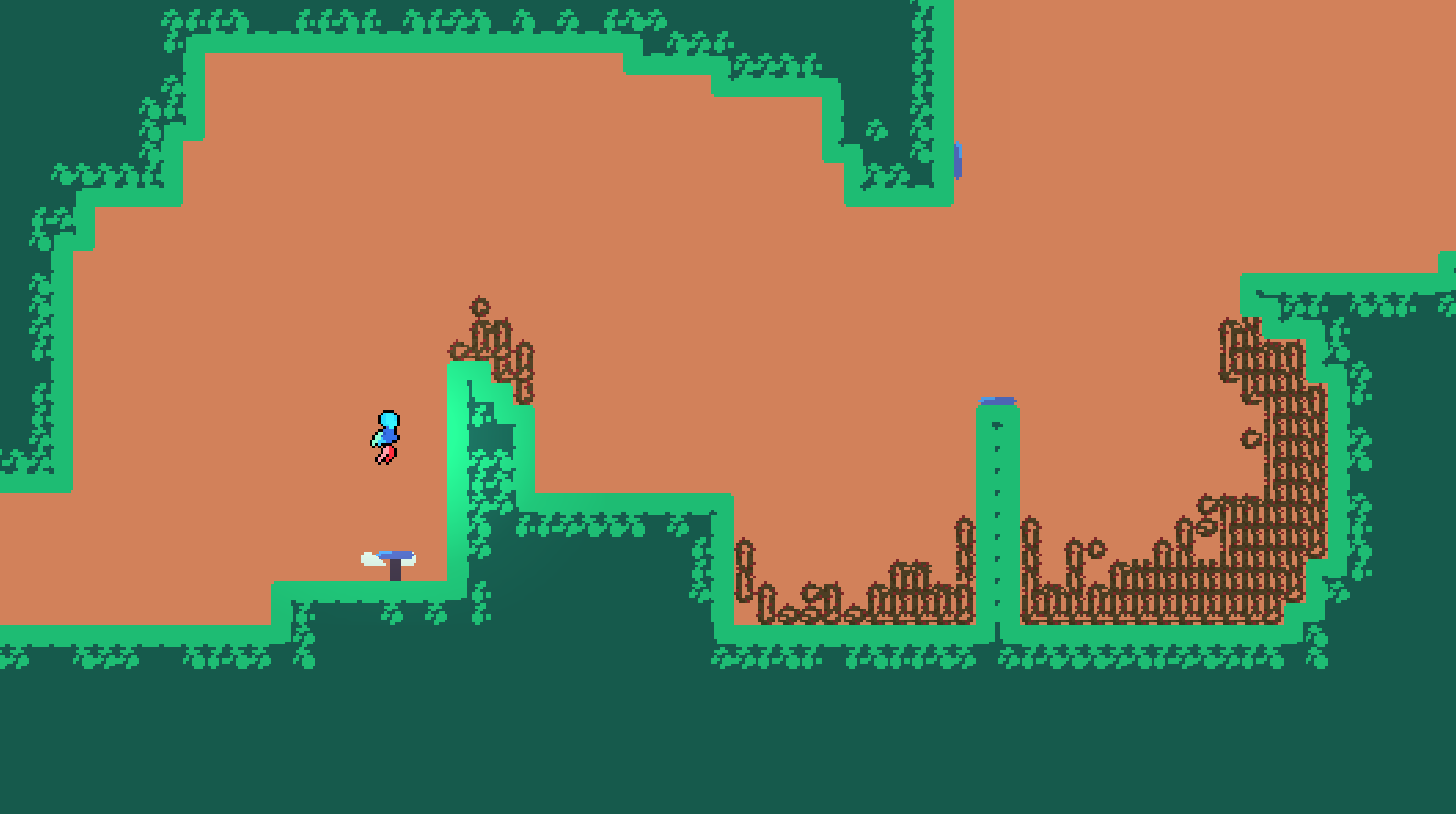
Above you can see when the jump, walljump, and spring are introduced respectively. The game allows the player to experiment with these mechanics comfortably before requiring a higher level of proficiency.
Developing a "Secret" Language
Robot Game doesn't use collectibles to encourage player exploration or skill expression, it instead uses notes that slowly tell the player a story of what happened in this world many years ago. Some of these notes are easy to find, but some are at the end of secret areas that are multiple screens long and feature extra challenging platforming.
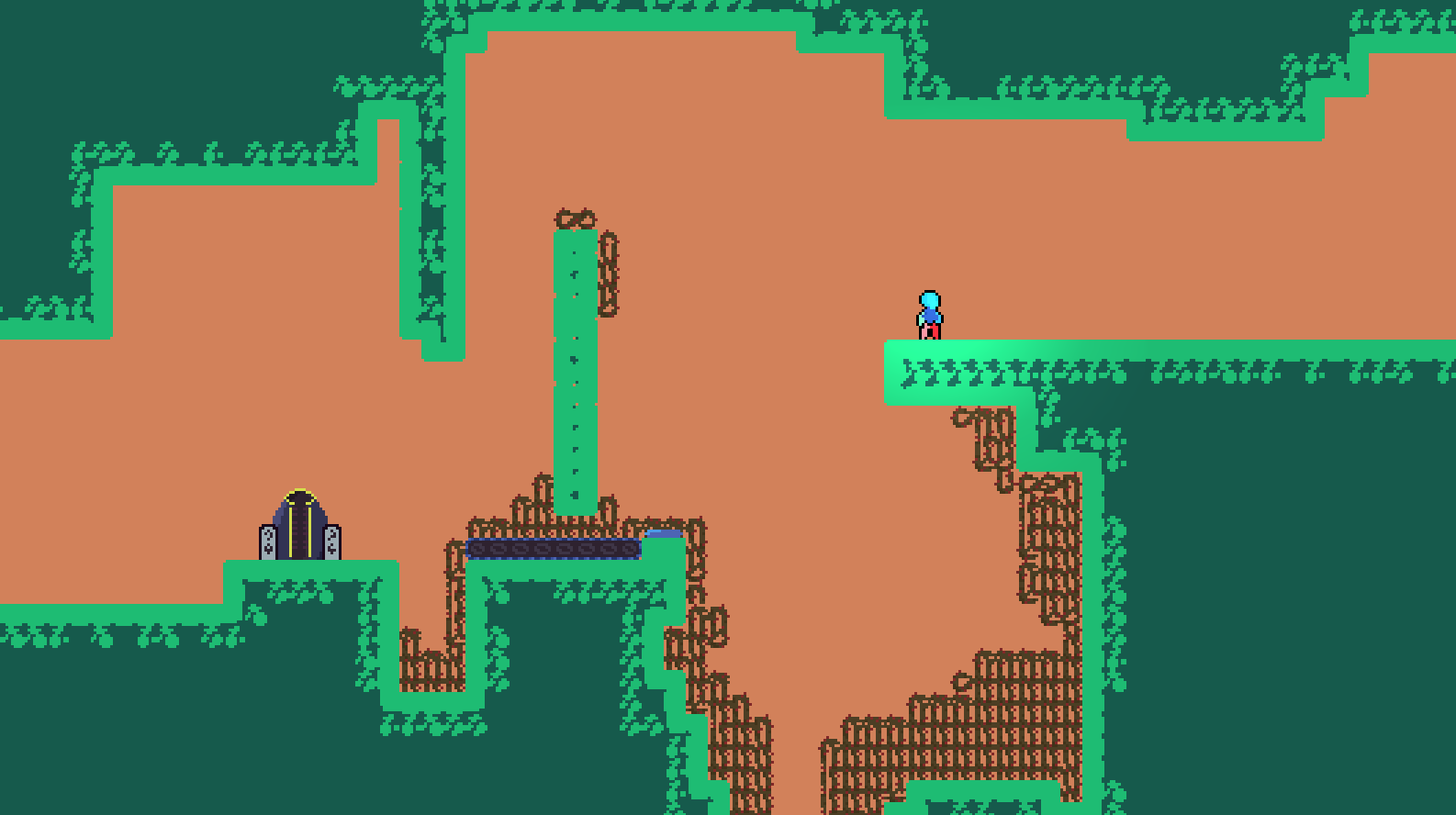
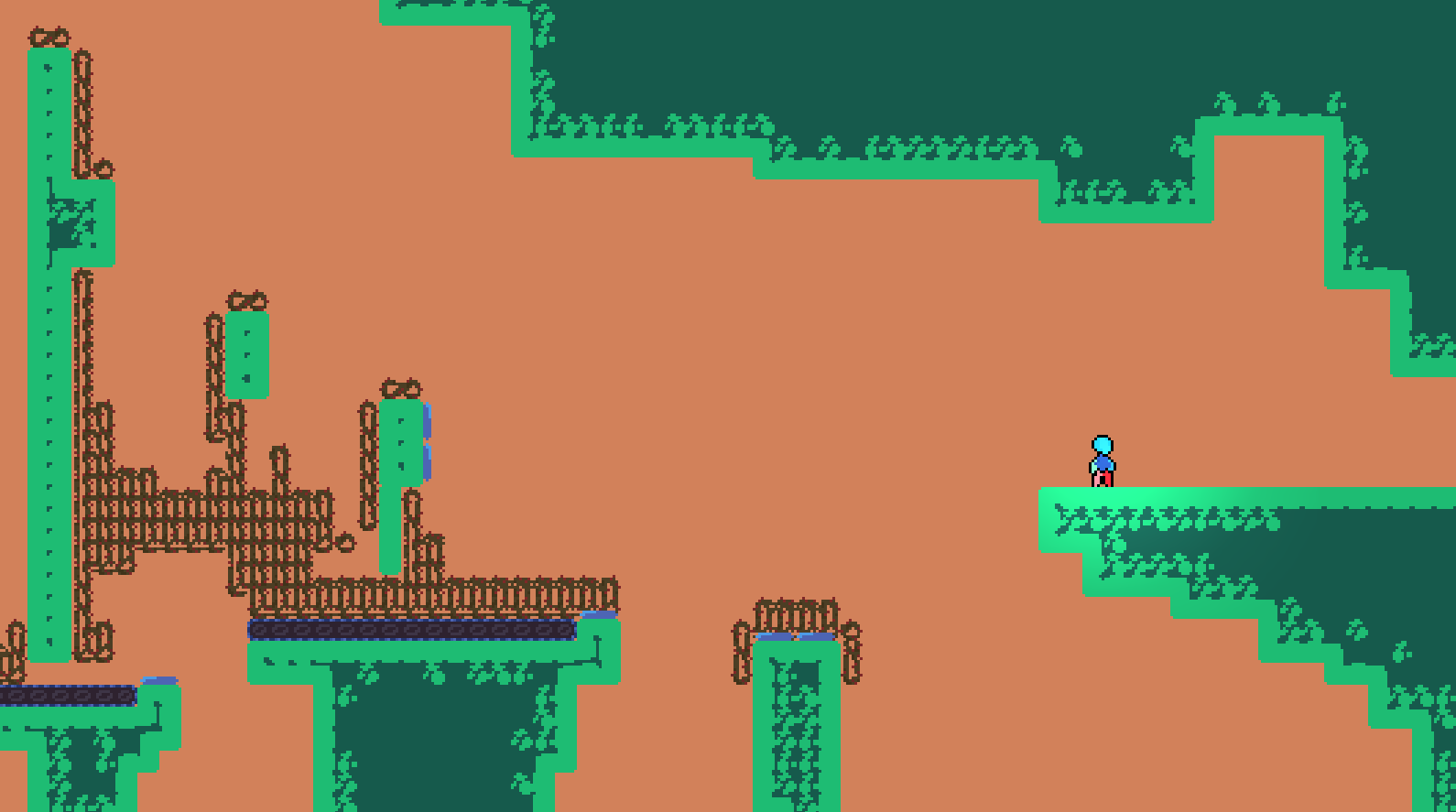
Above you can see two screens that each hold a secret entrance to another screen. The image on the left holds a secret in the bottom middle, and the image on the right holds a secret in the top right. At first glance these may seem like arbitrarily placed entrances, but they require player conditioning through using a consistent ruleset within my level's visual language. Usually, if there is a large gap in the bottom of the screen the player will die, but when the gap is suddenly suspiciously narrow and of a consistent width for multiple tiles vertically, then the player becomes aware that something is amiss with that area. Similarly, if the ceilings always only move in and out a few tiles at a time and suddenly there is a much deeper hole in the ceiling then the player will likely suspect a secret.
Playtesting
Now that I was quite happy with my first level I did an initial round of playtesting. I would have my friends play through the game while I watched and took extensive notes. I then had to weigh the experiences against each other and decide what was worth changing and what worked well. The biggest issue I discovered was simple: the game was too hard. To be more specific, the second half of the level ramps in difficulty too quickly. This resulted in some playtesters not being able to finish the level or rage-quitting in the final screens. My solution to this problem was to pad out the levels near the end of the level, adding more screens before the final challenge so that players have more time to become comfortable with the trickier jumps.
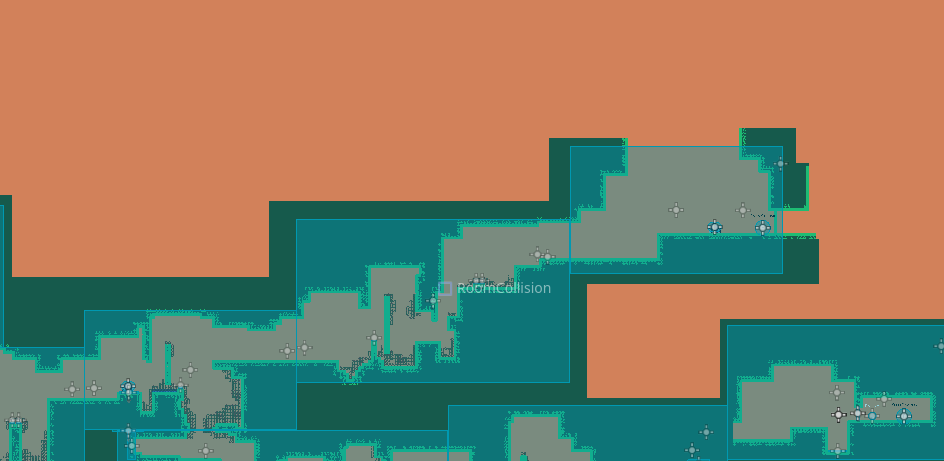
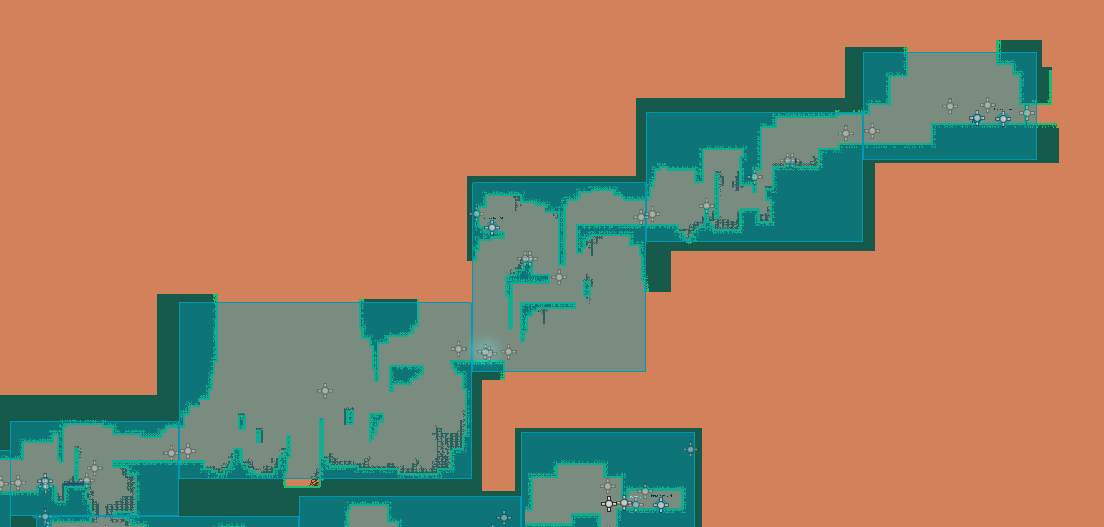
The first image above shows the end of the level before the playtest changes, and the second image shows the level after.
Polish and Decoration
I came away from the playtests feeling that my game and level designs are strong, but the game is short and missing much of the content that I hope to add. For now though, I decided to polish the first level and decorate to get it closer to what it will look like in the final version of the game. Now that I had iterated on the level multiple times, and playtested through the level, it was less likely that I would scrap what I had and make all of my decoration work be time wasted.
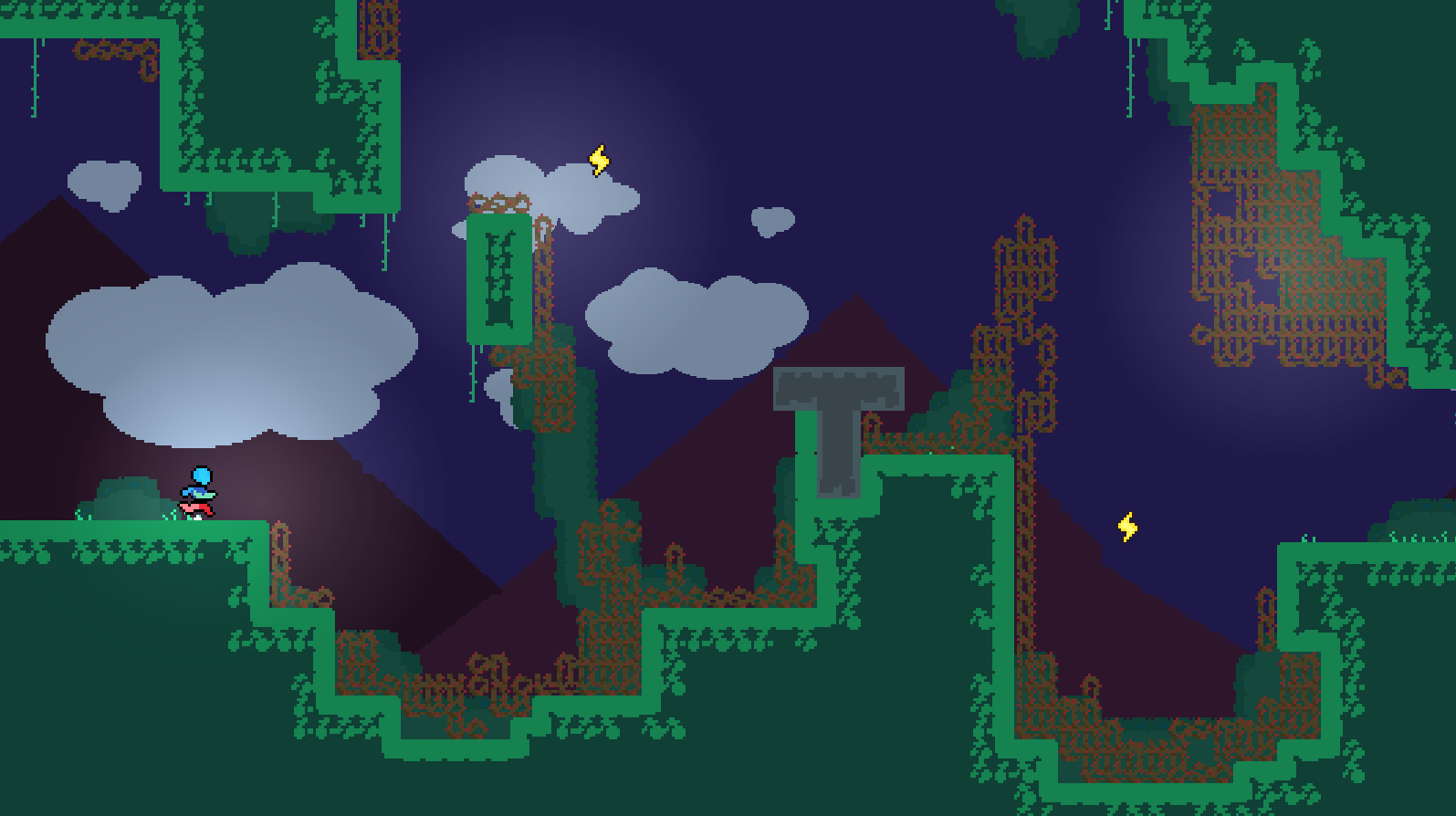
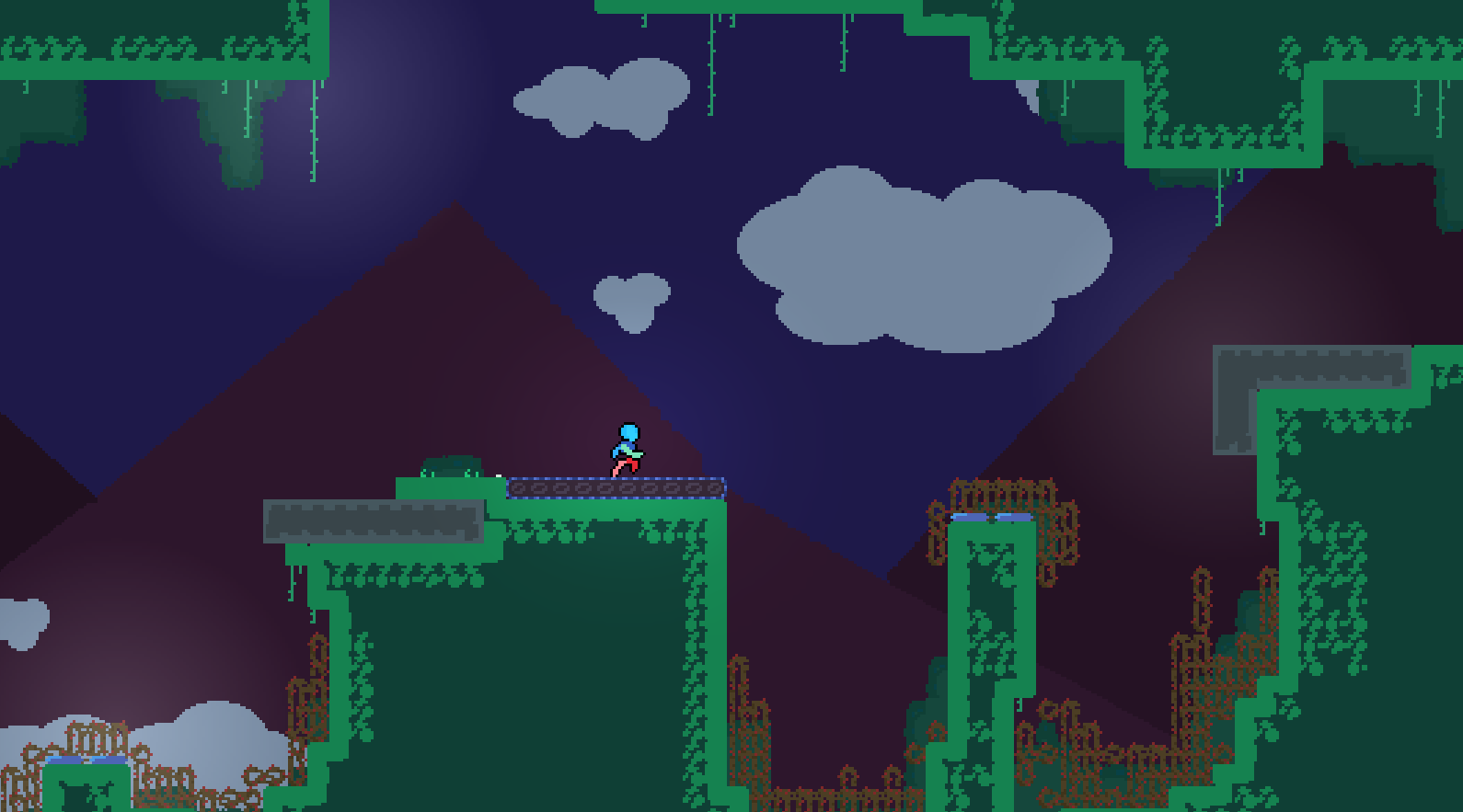
Full Playthrough:



